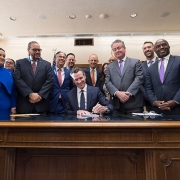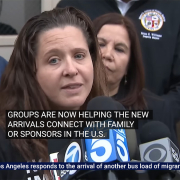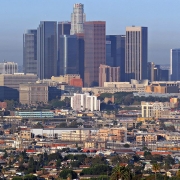Living up to the “Left Coast” Name
The “left coast” mostly lived up to its name during the midterms, though occasional signs of dissent could be seen. In California, Governor Gavin Newsom won big, and the GOP saw no major statewide successes. California controller candidate Lanhee Chen, the rare Republican endorsed by virtually every major newspaper, barely did better than his hapless GOP running mates in a loss. In Oregon, Christine Drazan failed to make it to the governor’s mansion, despite Portland’s ongoing meltdown and a spirited race. And in Washington, speculation about a closer-than-expected Senate race proved wrong.
Electoral evidence from the Golden State remains incomplete. California has adopted an ultra-permissive approach to voting, including mail ballots and ballot harvesting. The state’s electoral system causes close races—most importantly, the Los Angeles mayoral race between progressive Karen Bass and former Republican Rick Caruso—to remain up in the air for days after Election Night.
For now, Caruso appears to hold a narrow, but shrinking, lead. If Bass wins, she will have overcome the results of Caruso’s $80 million spending spree, the city’s corrupt governance, the proliferation of the homeless, and multiple celebrity endorsements. And if Caruso hangs on, he will be hamstrung by a city council apparently moving even further left.
San Francisco, of all places, may be in better shape. After recalling a far-left district attorney and three school board members earlier this year, voters elected (relative) moderates to the Board of Supervisors. But otherwise, signs of change are limited. The paltry California GOP delegation seems likely to shrink by at least two seats. Republicans remained competitive in Orange County, the Inland Empire, and the Central Valley. But they are a non-factor in the more populous urban coastal areas. A similar pattern holds in Oregon, where some exurban and small city areas could still flip to the GOP.
Is the West Coast’s radical politics the leading edge of the nation’s future? The region has long anticipated major technological, cultural, and fashion trends. But this is breaking down. Rather than leading the post-pandemic recovery, California has lagged in job creation, lost business in the ports, and seen rising out-migration. Business relocations continue to mount, including among tech firms. California now ranks among the least popular places for migrants. Recent surveys suggest that both younger, affluent professionals and parents are seeking to leave. And population slowdowns are underway in Oregon and Washington, too, as Portland and Seattle’s ambitions to become the next San Francisco persist, despite the manifest failures of that governance model.
And yet Tuesday indicated that West Coast progressives still face only limited opposition. Kate Brown, Oregon’s departing governor, has been ranked the least popular state chief executive, but a plurality of people still voted for her successor. Newsom’s approval is positive but far from overwhelming, yet he managed a near-landslide win.
Read the rest of this piece at City Journal.
Joel Kotkin is the author of The Coming of Neo-Feudalism: A Warning to the Global Middle Class. He is the Roger Hobbs Presidential Fellow in Urban Futures at Chapman University and Executive Director for Urban Reform Institute. Learn more at joelkotkin.com and follow him on Twitter @joelkotkin.
Photo credit: via Wikimedia under CC 1.0 License.






 Gage Skidmore, used here under CC 2.0 License
Gage Skidmore, used here under CC 2.0 License